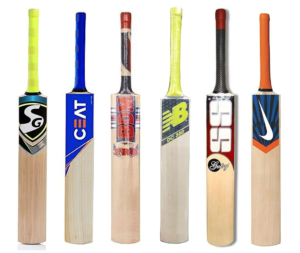How Self-Centering Vises Improve CNC Efficiency & Precision
Introduction
In CNC machining, precision is everything. The difference between a perfectly machined component and a rejected part often comes down to microns. While cutting tools and machine calibration receive a great deal of attention, one critical factor is frequently underestimated: the workholding system.
A self-centering vise is not just a clamping device – it is the foundation of accuracy, repeatability, and productivity on the shop floor. Companies like Xindian Precise have developed advanced self-centering vises that help manufacturers achieve higher throughput without sacrificing quality. In this article, we will explore how self-centering vises improve CNC efficiency and precision, why they are vital in modern machining, and what to consider when selecting the right model for your setup.

What is a Self-Centering Vise?
A self-centering vise is a workholding device designed to automatically align and clamp a workpiece at the centerline of the vise. Unlike traditional vises, where one jaw moves independently against a fixed jaw, self-centering vises move both jaws simultaneously and symmetrically.
Key features include:
- Automatic centering: Ensures the workpiece is clamped at the geometric center.
- High repeatability: Reduces setup errors and ensures consistency between batches.
- Compact design: Often more space-efficient than multiple independent clamps.
This simple but powerful principle makes them indispensable in high-precision CNC machining.
The Efficiency Advantage
1. Reduced Setup Times
In traditional setups, operators spend valuable time aligning workpieces manually. Self-centering vises eliminate this repetitive alignment step. By automatically positioning the workpiece in the center, setup times are dramatically reduced. For high-volume production, these time savings translate directly into lower costs.
2. Faster Changeovers
In modern machine shops, flexibility is critical. Switching between different parts and batch sizes should take minutes, not hours. A hydraulic vise allows quick changeovers with minimal adjustment, making it ideal for job shops and production lines alike.
3. Improved Workflow Consistency
With automatic alignment, the risk of operator error decreases. Every part starts in the exact same position, which means the machining program can run without manual corrections, reducing scrap and downtime.
The Precision Advantage
1. Symmetrical Clamping
Because both jaws move simultaneously, clamping forces are distributed evenly across the part. This reduces deformation, ensures better accuracy, and extends tool life.
2. Enhanced Repeatability
High-end self-centering vises, such as those offered by Xindian, provide repeatability within microns. This level of consistency is crucial when machining complex geometries or multi-axis parts.
3. Multi-Axis Compatibility
CNC machining often requires workpieces to be rotated or indexed across multiple axes. A securely centered part simplifies programming and guarantees accurate tool paths across all orientations.
Applications in CNC Machining
Self-centering vises are highly versatile and can be used in a wide range of industries:
- Aerospace: High-tolerance components that demand absolute repeatability.
- Automotive: Batch production of symmetrical components such as gears, housings, or shafts.
- Medical Devices: Small, intricate parts requiring precise clamping without distortion.
- General Engineering: Flexible workholding for prototypes and small-batch runs.
Considerations When Choosing a Self-Centering Vise
Not all vises are created equal. When selecting the right model, consider:
- Clamping Force: Ensure the self centering vise holding strength for your material and cutting forces.
- Jaw Width & Stroke: Match the vise dimensions to your typical workpiece sizes.
- Material & Build Quality: Hardened steel construction offers durability and stability.
- Mounting Flexibility: Check compatibility with your machine table, rotary axes, or zero-point clamping systems.
- Repeatability & Accuracy: Look for manufacturers that provide precise specifications.
Case Example: Efficiency in Practice
A CNC job shop specializing in aluminum housings reported a 30% reduction in setup time after switching to self-centering vises. Previously, operators had to manually measure and align each part before machining. With the new system, parts were automatically centered, and batch consistency improved dramatically. Scrap rates decreased, and machine utilization increased.
Maintenance Tips to Maximize Performance
- Regular Cleaning: Keep chips and coolant residue away from the jaws and screw mechanisms.
- Lubrication: Apply recommended lubricants to maintain smooth jaw movement.
- Inspection: Check for wear on jaws and guideways periodically.
- Calibration: Verify clamping accuracy with test parts to ensure continued repeatability.
With proper maintenance, a high-quality self-centering vise can deliver reliable performance for years.
Conclusion
In modern CNC machining, precision and productivity are two sides of the same coin. A self-centering vise provides both by reducing setup times, improving repeatability, and ensuring accurate clamping. Whether you are machining aerospace components or automotive parts, this workholding solution can transform your workflow.
As the demand for higher throughput and tighter tolerances continues to grow, investing in a reliable self-centering vise is not just a smart choice – it is a competitive necessity.

